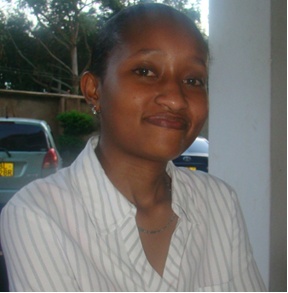Through the PMI-supported Health Commodities and Services (HCSM) program, health care workers across Kenya are being trained in the use of rapid diagnostic tests (RDTs) to help improve the treatment and management of malaria.

Ms. Yvonne Kianduma, one of 3,000 health workers trained on RDT use as a part of a nationwide exercise supported by PMI. Source: USAID/Kenya
“I am happy that I have learnt about case management of uncomplicated malaria, testing for malaria using the rapid diagnostic kits, recording and monitoring of use of the kits,” says Yvonne Kianduma, a medical officer from North Kinangop, Kenya. Ms. Kianduma was one of 3,000 health workers trained on the use of malaria rapid test kits in a 2012 nationwide exercise supported by the President’s Malaria Initiative.
RDTs allow for the quick detection of malaria parasites in a person’s blood and are becoming increasingly available for resource-poor settings where reliable microscopic diagnosis is not possible. These tests aid in prompt diagnosis and treatment of malaria, which helps prevent the disease from spreading throughout communities. Training of health workers on the use of RDTs and adherence to results ensures that the health workers are able to correctly use RDTs and appropriately treat or refer patients, based on the tests’ results.
The rollout and training in Kenya, conducted through the Health Commodities and Services Management (HCSM) program, was a critical step toward reaching national malaria prevention and control goals. The HCSM Program works to strengthen delivery systems that provide essential health care commodities and services for public health priorities in Kenya. Key activity areas include commodity management support, pharmaceutical policy and services, and strengthened laboratory system and service delivery.
The National Malaria Strategy 2009-2017 states that by 2013, 100 percent of all fever cases that present in health facilities shall receive a parasitological diagnosis and effective treatment for malaria. Before the training, diagnostic services were reserved for hospitals and other larger health facilities that had access to microscopes and trained health workers. In order to reach the targeted population stipulated in the strategic plan, the government had to roll out RDTs to peripheral facilities, requiring the involvement of community health workers. To this end, an RDT implementation plan was developed, detailing all the operational and technical aspects that needed to be in place prior to the nationwide rollout of the RDTs. Training of frontline health workers, like Ms. Kianduma, was key to this plan.
Provincial management teams worked with the PMI-supported implementation partner to identify and train 30 trainers of trainers (TOTs) in October 2012, and conduct nationwide, one-day trainings of health workers beginning in November. During these sessions, job aids and reporting tools, which had previously been reviewed by HCSM to include a RDT component, were distributed. By the end of the training in January 2013, a total of 3,002 health care workers nationwide were trained on the use of RDTs and on reporting of malaria commodities.
Findings from a June 2013 quality of care survey indicated that the availability at facilities of functional diagnostic services, including RDTs, increased from 55 percent to 90 percent. In terms of use, results indicated that reporting rates of malaria commodities has also remained consistently above the 70 percent mark, indicating consistent use at the facility level. Moreover, a quantification of malaria commodities conducted in during the month, showed reduced consumption of artemisinin-based combination therapies (ACTs), used in the treatment of malaria, due to better diagnostic coverage and adherence. In the long run, this should lead to reduced costs on the procurement of ACTs as well as reduced threat of antibiotic resistance.
